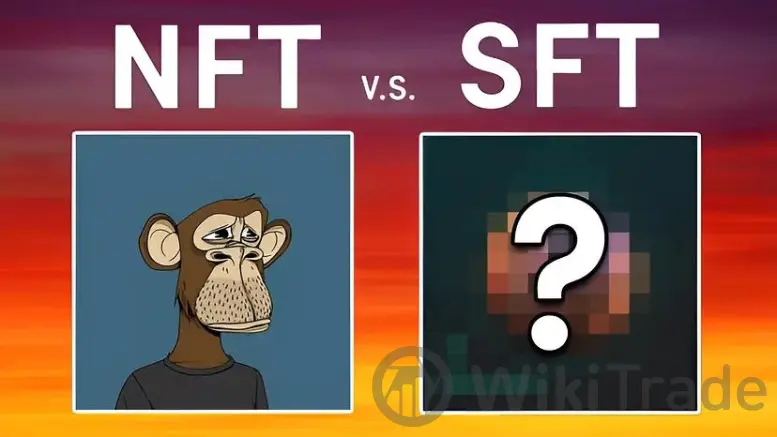What is the difference between nft vs sft
Abstract: In the digital world, tokenization is a hot topic. It's the process of replacing sensitive data, like your credit card number, with a substitute value known as a token. This token is a safeguard, ensuring that your real data stays secure.
NFTs: The Unique Digital Assets
Non-fungible tokens, or NFTs, are all about uniqueness. Each NFT is one-of-a-kind, much like a snowflake or a fingerprint. They represent ownership of a specific digital item, be it art, collectibles, or virtual real estate. The blockchain technology behind NFTs ensures that each token has its own unique signature.

How NFTs Work
- Tokenization of Digital Assets: An asset, like a digital painting, is turned into an NFT on a blockchain.
- Immutable Records: The ownership of the NFT is recorded on a blockchain, creating a record that can't be changed.
- Smart Contracts: These contracts define the rules for the NFT, including how creators get paid when their work is resold.
- Transfer of Ownership: NFTs can be bought and sold, with the blockchain updating to show the new owner.
- Interoperability: NFTs aren't tied to one platform, allowing for flexibility in trading.
- Art and Collectibles: Artists can sell digital art, and buyers get a verifiable original.
- Gaming: Gamers can own and trade in-game assets.
- Virtual Real Estate: People buy and sell virtual land in digital worlds.
- Music and Entertainment: Musicians use NFTs to sell music and tickets directly to fans.
- Virtual Identities: NFTs create unique avatars and identities in online worlds.
- Creation and Standardization: SFTs are created to be compatible across platforms.
- Attributes and Metadata: SFTs have the same attributes as others of their kind but also unique identifiers.
- Use Cases: They're great for items that need to be identified, like tickets or certificates.
- Smart Contracts: These define how SFTs are used and transferred.
- Ticketing and Events: SFTs are used for digital tickets with specific seat numbers.
- Supply Chain: They help track products with serial numbers.
- Collectibles: SFTs can be used for trading cards with unique identifiers.
- Gaming: They help gamers own items that are identical in value but have distinct attributes.
- Virtual Real Estate: SFTs represent virtual property with standardized values.
- NFTs offer clear ownership and a wide range of applications.
- SFTs bring efficiency and standardization to transactions.
- NFTs can be a concern for the environment and are becoming saturated.
- SFTs lack the full uniqueness of NFTs and can be complex to manage.
- Photos
- Documents
- Videos
- Books
- Music
- Social media accounts
- NFTs
- Cryptocurrency

Where NFTs Make a Splash

SFTs: The Partly Unique Tokens
Semi-fungible tokens, or SFTs, are a mix of fungible and non-fungible traits. While they share attributes with other SFTs, they also have unique identifiers, like serial numbers.

How SFTs Operate

Where SFTs Fit In
The NFT vs. SFT Showdown
NFTs are all about individuality, while SFTs balance uniformity with unique identifiers. NFTs are perfect for one-of-a-kind items, whereas SFTs excel in industries needing standardized items with clear identification.
The Advantages
The Drawbacks
Digital Assets: The Bigger Picture
Digital assets are anything digital that has value. This includes photos, documents, videos, and more. With blockchain technology, these digital items can be turned into valuable assets through tokenization.
Types of Digital Assets
Why Digital Assets Matter
Digital assets are a big part of our lives, from personal photos to business data. They're also a key part of the blockchain and cryptocurrency revolution, changing how we create and use value in the digital world.




Top News
 WikiTrade
WikiTrade WikiTrade
WikiTrade WikiTrade
WikiTrade WikiTrade
WikiTrade WikiTrade
WikiTrade WikiTrade
WikiTrade WikiTrade
WikiTrade WikiTrade
WikiTrade WikiTrade
WikiTrade WikiTrade
WikiTrade


